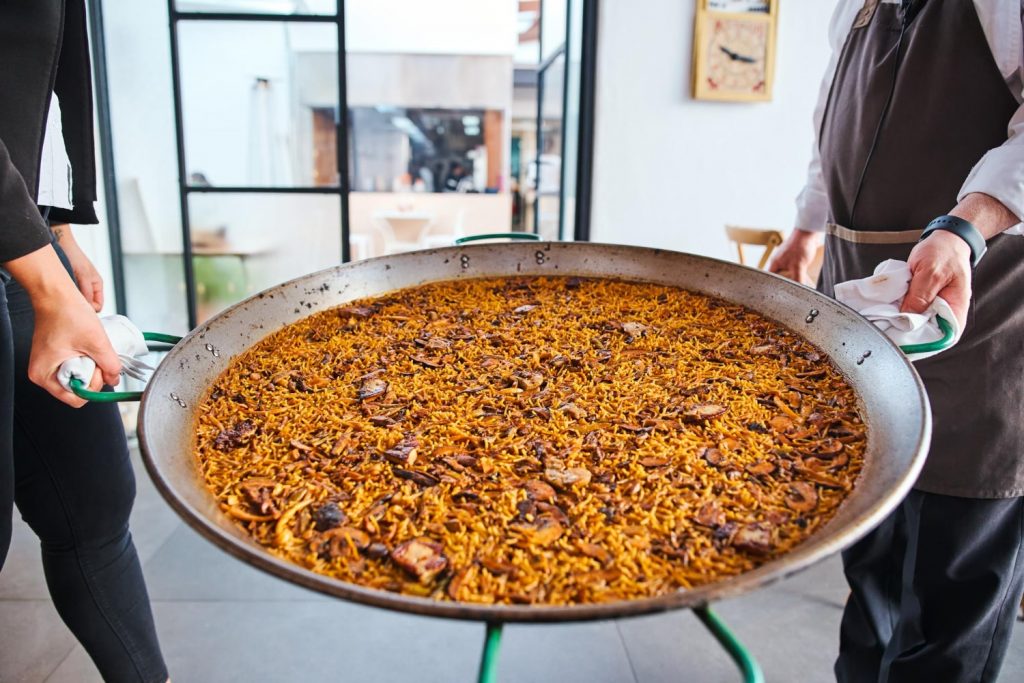Winter is the time of year when we appreciate home comforts more than ever. There’s nothing quite like the feeling of coming in from the cold to a warm, home-cooked meal after a busy day. So if you’re looking to add some Spanish flair to your comfort food repertoire, you’ve come to the right place. The Tapas Sauces is here to guide you through a range of mouthwatering dishes that are sure to put a smile on the face of everyone at your dining table on a winter’s evening. So, without further ado, let’s dive into the recipes.
Spicy Appetizers
To kick things off, we’ve got two delightful appetizers that will whet your appetite and warm you up at the same time. Hailing from Madrid, Patatas Bravas is a dish that has long been a comfort food staple in Spanish homes and restaurants. Made with spicy bravas sauce—a delicious combo of tomato, olive oil, red pepper, chilli, salt, and spices—don’t be surprised if this satisfying dish becomes a feature of your winter cooking for years to come!
Equally spicy and satisfying is this recipe for Potatoes with Mojo Picon. A classic tapa recipe that comes from the Canary Islands, it stands out for its use of Mojo Picón, a tomato-based spicy sauce with a hint of garlic.
Meaty Meals with a Mediterranean Twist
Nothing hits the spot in winter quite like a meaty dish you can really sink your teeth into. Enter The Tapas Sauces with just the recipe to satisfy your cravings. These Meatballs Sevilla-Style make for a hearty winter meal that you can whip up in just 15 minutes.
Similarly, if you like to be adventurous with your choice of meat, try this Veal with Salsa Chimichurri recipe. Famous for its tender texture and subtle flavor, veal has long been a staple of gourmet dining in Spain. But what elevates this dish beyond a simple meat dish? Well, that’s an easy one to answer: it’s the addition of salsa chimichurri from The Tapas Sauces. A sweet and spicy sauce that hails from Argentina, it stands out for its zesty kick courtesy of the lemon juice used in the recipe. In recent years, chimichurri sauce has been taking the world by storm and it’s no wonder why. Perfect for roast meat dishes, it’s the ideal sauce to amp up the flavor of your favorite recipes.
Finally, for lovers of umami flavors and simple recipes, try these Grilled Mushrooms with Bacon and Salsa Verde. Ready in 15 minutes, this delightful mushroom dish is a breeze to make. Simply gather your mushrooms and fill them with smoked bacon and our delectable Salsa Verde, and voilà! You’ve got a mouthwatering mushroom meal in minutes!
Spanish Seafood Recipes Perfect For Winter
In Spain, the concept of comfort food goes way beyond cheese and meat dishes. There are also plenty of seafood meals that Spaniards turn to during the winter. Take this Black Rice with Salsa Alioli as an example. Made with shrimp, calamari, monkfish, and black rice, it gets its creaminess from the addition of The Tapas Sauces Alioli.
Alternatively, if you’re craving a seafood dish with a spicy kick, try this Mojo-Style Sauteed Vegetables with Prawns. Made with a whole host of delicious and nutritious veggies—onions, peppers, broccoli, asparagus, zucchini, green beans—this delicious meal is a great way to up your intake of veggies over the winter. Best of all, it’s ready in just 25 minutes, making it the ideal dinner meal for those busy days when time is of the essence.
Variety Is the Spice of Life
Winter is the perfect time of year to shake things up in the kitchen. Sure, we all have our signature dishes that we always fall back on, but getting creative in the kitchen is one of the simple pleasures in life. And that’s where The Tapas Sauces comes in. Our unique and varied range of Spanish-style sauces are a great way to introduce new flavors to your cooking. If you’d like to learn more, here is a handy guide to the best sauces you may be missing out on. For more recipe inspiration and cooking tips, be sure to visit our blog.


